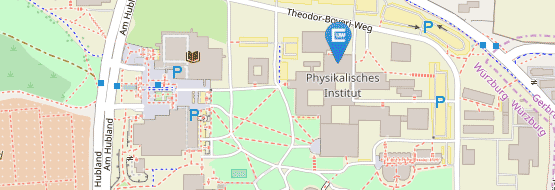B05
Superconducting hybrid structures based on topological insulators and Weyl semimetals
Summary
This project is based on two complementary research direction. The first research direction is de- voted to the generation of unconventional superconductivity by external driving. One possibility is a spatiotemporal modulation of the material which can induce asymmetric phonon spectra resulting in non-Hermitian superconductivity. Another possibility is the external driving of the material via surface acoustic waves. This process breaks symmetries of the crystal which can lead to unconventional superconductivity. In this part of the project, we want to better understand to which extent uncon- ventional and non-Hermitian superconductivity can be generated by external driving. Additionally, we want to identify ideal material platforms to implement these schemes. Eventually, we aim to propose hybrid structures (such as Josephson junctions) in which driven systems are combined with static ones to generate, for instance, particular bound states. The second research direction deals with a proper understanding of current-biased Josephson junctions in topological and complex materials. The calculation of the I-V characteristics of current- biased Josephson junctions is a complicated mathematical problem describing the dynamical evo- lution of the super-conducting phase difference across the junction by a highly non-linear integro- differential equation. A proper treatment of this problem is barely done but contains exciting and novel physics. We aim to investigate dynamical signatures of current-biased Josephson junctions that can be employed to clearly identify unconventional superconductivity. In particular, we want to find out in which sense topological and non-topological Josephson junctions can be distinguished from each other. Moreover, we plan to analyze current-biased Josephson junctions formed by driven system that give rise to odd-frequency pairing or non-Hermitian superconductivity.


